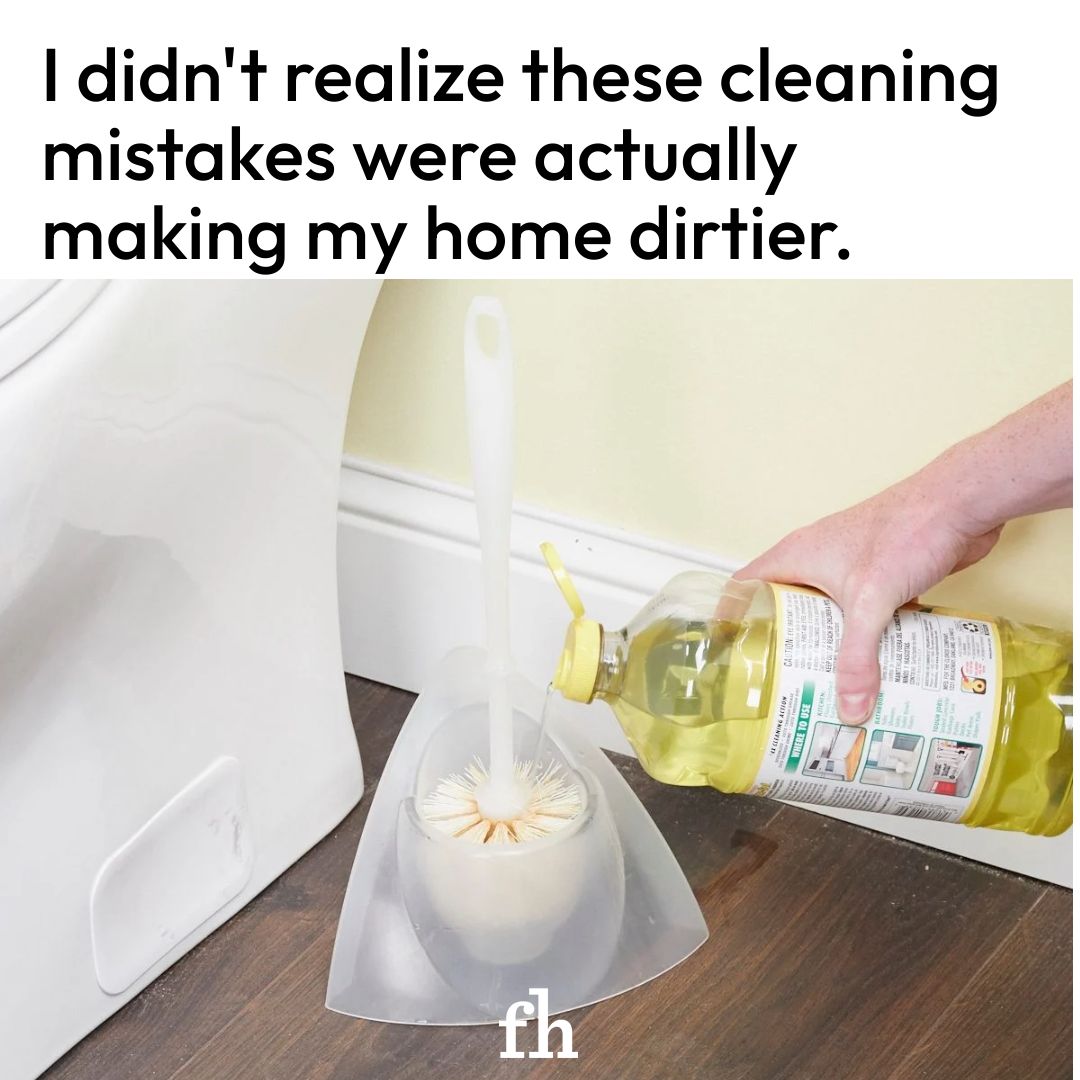6. Skipping the Sink
Why it’s dirty: Whether or not your sink has a garbage disposal, it is a breeding ground for germs due to trapped food particles and constant moisture.
How to fix it: Wipe down your sink after every use and clean the drain weekly with baking soda to reduce germs.
7. Cleaning from the Ground Up
Why it’s dirty: Cleaning the floor before furniture leads to dust and crumbs from tables or shelves falling onto the freshly cleaned floor, making you clean it twice.
How to fix it: Clean a room from top to bottom—starting with windows, then tables, counters, and furniture—before finishing with the floor.
8. Spraying Cleaner Directly on a Surface
Why it’s dirty: Spraying cleaner directly on surfaces can create buildup, leaving furniture greasy and windows streaky. It may also cause dust to stick more easily.
How to fix it: Spray cleaner onto a microfiber cloth or paper towel first, then wipe down the surfaces.
9. Not Cleaning the Washing Machine
Why it’s dirty: Residue from skin cells, dust mites, and stains can build up inside your washing machine, leading to dirty clothes and bad odors.
How to fix it:
For top-loaders, start the longest, hottest wash cycle. When the drum is almost full of water, pour in 1 liter of vinegar and 1 cup of baking soda. Pause the cycle for at least an hour. During the pause, clean the lid and visible parts of the machine. Let the cycle finish and repeat if necessary. Then, wipe down the inside and leave the lid open to air dry.
For front-loaders, pour a mixture of 1/4 cup baking soda and water into the detergent compartment, and 2 cups of vinegar into the drum. Set it to the hottest cycle. Afterward, clean the drum, door, detergent compartment, and exterior, paying extra attention to the gasket. Leave the door ajar between washes to allow airflow.
10. Washing a Cutting Board with Dish Soap
Why it’s dirty: While dish soap and hot water clean off visible food, tiny food particles can get trapped in the grooves of wood or plastic cutting boards, breeding bacteria.
How to fix it: Skip the dishwasher—it can warp wooden cutting boards and melt plastic ones. Instead, soak them in a solution of hydrogen peroxide or 2 tablespoons of bleach mixed with 1 gallon of water. Rinse and dry completely.

